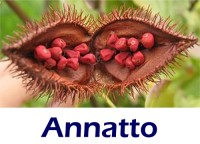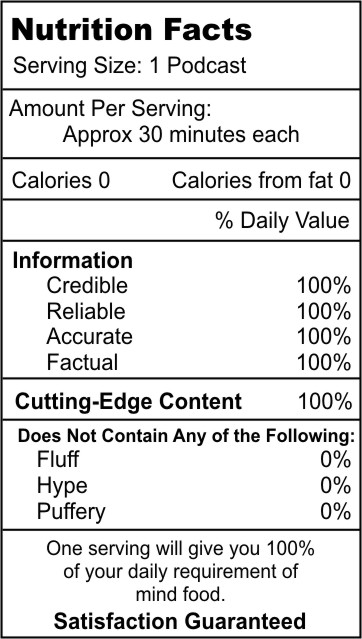Podcast: Play in new window | Download (Duration: 33:54 — 62.4MB)
Tocotrienols have cardiovascular and cancer benefits.

 All of you know about vitamin E. It’s benefits have been researched for almost 100 years. What many of you may not know is that there 8 different vitamin E molecules and they all have different properties and benefits. There are two main classes of vitamin E, tocopherols which is the most common form, and tocotrienols, the lesser known but perhaps more important. Each class of vitamin E is divided into 4 sub types, alpha, beta, delta and gamma. The most commonly used form vitamin E is d-alpha tocopherol. In this interview with Dr. Barrie Tan, we will discuss the benefits of tocotrienols from annatto. In nature, tocotrienol is derived from plant sources that include annatto, palm, and rice bran oil.
All of you know about vitamin E. It’s benefits have been researched for almost 100 years. What many of you may not know is that there 8 different vitamin E molecules and they all have different properties and benefits. There are two main classes of vitamin E, tocopherols which is the most common form, and tocotrienols, the lesser known but perhaps more important. Each class of vitamin E is divided into 4 sub types, alpha, beta, delta and gamma. The most commonly used form vitamin E is d-alpha tocopherol. In this interview with Dr. Barrie Tan, we will discuss the benefits of tocotrienols from annatto. In nature, tocotrienol is derived from plant sources that include annatto, palm, and rice bran oil.
How Does It Work?
Although at first glance, the vitamin E particles appear the same, nuances in their molecular framework set them apart. While both are exceptional antioxidants, only tocotrienol is more flexible due to three double bonds in the tail region of the molecule, resulting in benefits other than protection from oxidation. Furthermore, smaller tocotrienol molecules, namely delta- and gamma-tocotrienol, were shown to be most potent for most applications, since their small size allows easier access to cell membranes to more readily quench free radicals.
Three Sources of Tocotrienol
 Until 2003, the only commercial sources of natural tocotrienol were palm and rice. Hence, early studies utilized tocotrienol derived from these two sources. Both sources, however, contain significant amounts of alpha-tocopherol, which was established to interfere with tocotrienol benefits. “Palm tocotrienol” and “rice tocotrienol”, also sometimes called tocotrienol-rich fraction (TRF), are actually mixtures of tocopherol and tocotrienol, typically containing 25-50% tocopherol (mostly as alpha-tocopherol). Annatto naturally provides only the most potent delta- and gamma-tocotrienol while being tocopherol-free, a composition never before seen.
Until 2003, the only commercial sources of natural tocotrienol were palm and rice. Hence, early studies utilized tocotrienol derived from these two sources. Both sources, however, contain significant amounts of alpha-tocopherol, which was established to interfere with tocotrienol benefits. “Palm tocotrienol” and “rice tocotrienol”, also sometimes called tocotrienol-rich fraction (TRF), are actually mixtures of tocopherol and tocotrienol, typically containing 25-50% tocopherol (mostly as alpha-tocopherol). Annatto naturally provides only the most potent delta- and gamma-tocotrienol while being tocopherol-free, a composition never before seen.
Why Is Tocopherol-Free Important?
Tocopherol interferes with tocotrienol benefits. For the first time in 1996, the cholesterol-modulating properties of tocotrienol were found to be compromised by one of its very own vitamin E siblings, alpha-tocopherol. The researchers concluded that effective tocotrienol preparations should contain less than 15% of alpha-tocopherol and more than 60% of desmethyl tocotrienols (gamma- and delta-tocotrienol). The only natural source of tocotrienols that fits this prerequisite is annatto, which is essentially tocopherol free and contains only the most potent delta- and gamma-tocotrienols (90% and 10%, respectively). Today, more research is confirming that alpha-tocopherol interferes with tocotrienol benefits, both directly and indirectly.
Benefit
As part of the vitamin E family, tocotrienol is a superb antioxidant. Lipid oxygen radical absorbance capacity (L-ORAC) studies point to delta-tocotrienol as the most potent antioxidant of the vitamin E series, followed by gamma-tocotrienol and delta- and gamma-tocopherols [12]. Aside from antioxidant benefits, research since the early 80s has repeatedly indicated that delta- and gamma-tocotrienol help in the maintenance of cholesterol levels that are already within the normal range.
As numerous new studies are published, tocotrienol reaches a new measure of research height, pointing towards promising benefits for overall optimum health and aging.
Vitamin E History
Herbert McLean Evans and Katherine Bishop discovered vitamin E in 1922 as a vital nutrient to prevent birth defects. However, it was not until the late 1950s that the scientific community became aware that the vitamin E family consists of two major subgroups, namely tocopherols and tocotrienols. In 1936, vitamin E was first isolated from wheat germ oil. While commercialization of natural soy-derived tocopherols began in the 1950s, tocotrienols were only recently brought to the market, starting with products derived from palm in 1992, rice in 1999, and finally annatto in 2003.
About Dr. Barrie Tan
Dr. Barrie Tan earned his doctorate in chemistry with emphasis on biochemistry at the University of Otago, New Zealand. He later became a professor of chemistry and food science/nutrition at the University of Massachusetts, Amherst. His research expertise includes lipid-soluble materials such as carotenoids, tocotrienols/tocopherols, CoQ10, omega-3s and cholesterol. He was the first to introduce tocotrienol’s benefits to the nutrition industry.










{ 0 comments… add one now }